For such a small country, Costa Rica’s biodiversity is simply astounding. This is due to its location as the meeting place of two of the world’s major biological regions – the Nearctic to the north and the Neotropical to the south. It has a remarkable geological and climatic complexity and consequently an enormous range of habitats, from rainforests, dry forests, cloudforests and mangroves to wetlands.
But conservation has a key role to play, and the country’s well-kept and well-guarded national parks and nature reserves allow its wildlife to thrive. Indeed, so fantastic are Costa Rica’s national parks that it makes it difficult to narrow down which ones to visit. So we’ve rounded up the best wildlife destinations in Costa Rica to make that decision easier for you.
Volcán Poás National Park
This national park is dominated by the volcano of the same name, which towers some 2,708m in the centre, still smoking and surrounded by beautiful forest. The crater is almost 1.5 km across – the second largest in the world.
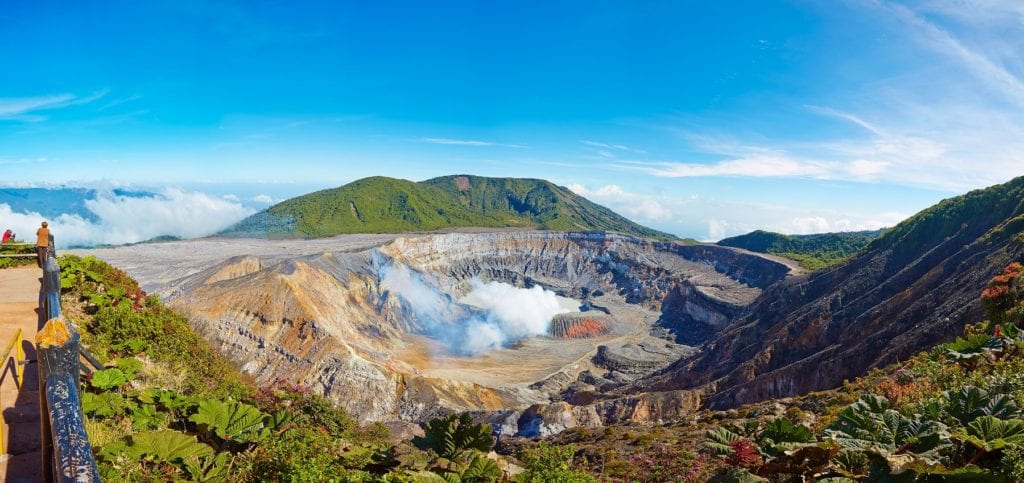
The park is rich with abundant birdlife, given the altitude and barren nature of the terrain, and home to the only true dwarf cloudforest in Costa Rica. Trails are well marked to help guide you from the visitor centre to the geysers, lake and other places of interest.
Best time to visit: early morning, January to April
Tortuguero National Park
This 29,068ha national park has a marine extension of over 50,000 ha, conserving the Atlantic nesting sites of the green and leatherback turtle and the Caribbean lowland rainforest inland. If creeping along the coast in the middle of the night, with no torch, wasn’t exciting enough, imagine seeing a massive leatherback turtle coming ashore to nest.
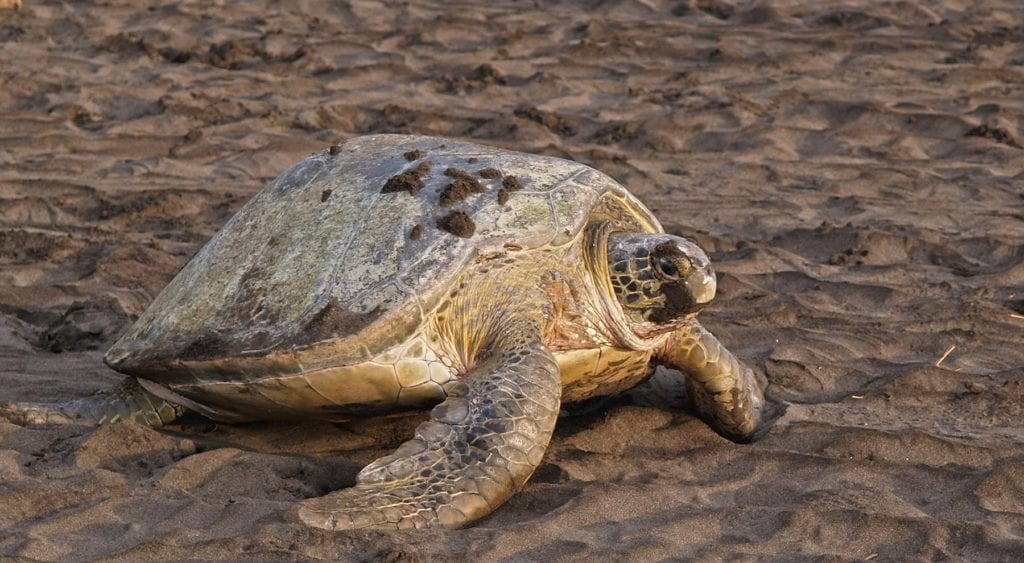
Laboriously dragging itself up the beach to beyond the high watermark, it digs a deep hole to incubate the leathery eggs, and returns exhausted to the restful world of the ocean.
Best time to visit: As with much of Costa Rica, getting the timing right to see this natural phenomenon is essential. The green turtles lay their eggs at night on the scrappy, rather untidy beach from June to October, with the hatchlings emerging from the depths of their sandy nests until November at the latest. Leatherbacks can be seen from March to June. Hawksbill and loggerheads also nest at Tortuguero but numbers are minimal.
Manuel Antonio National Park
With 683ha of mangrove swamps and beaches, home to a rich variety of fauna and flora, Manuel Antonio National Park can rightly claim to be the second best wildlife destination in Costa Rica, after Volcán Poás.
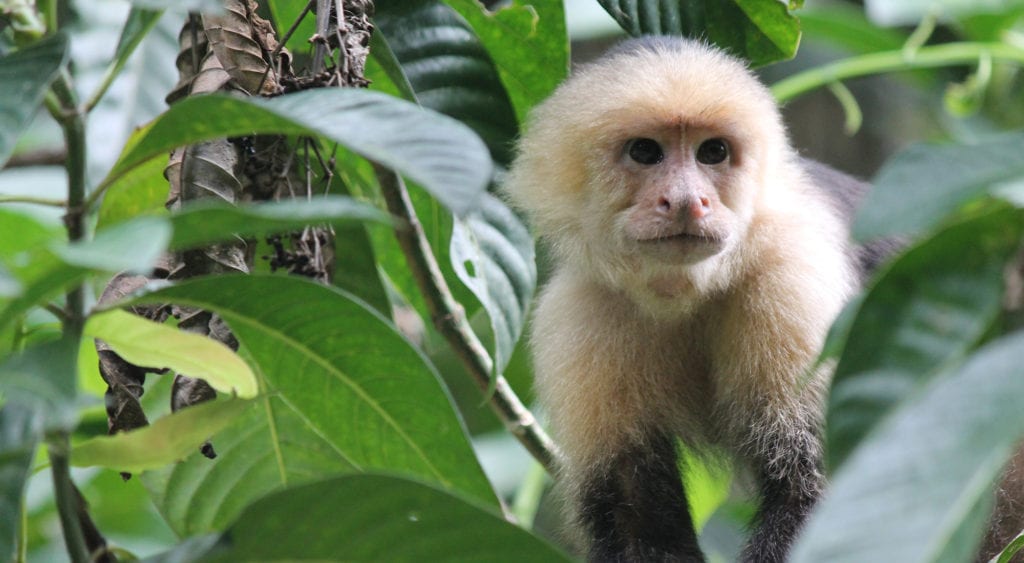
Just 7km south of Quepos on a paved road, three beautiful, forest-fringed beaches stretch along the coastline and around the headland of Punta Catedral: Espadilla Sur, Manuel Antonio and Puerto Escondido. Iguanas and white-faced monkeys often come down to the sand.
In addition to enjoying the beaches, hiking is also good in the park. A 45-minute trail, steep in places, runs round the Punta Catedral between Espadilla Sur and Manuel Antonio beaches. If you’re early and quiet, it is possible to see a surprising amount of wildlife.
Best time to visit: August/September
Rincón de la Vieja National Park
Most easily visited from Liberia, Rincón de la Vieja (14,161ha) was created to preserve the area around the Volcán Rincón de la Vieja, to the northeast of the town. The park includes dry tropical forest, mud pots, hot sulphur springs and several other geothermal curiosities. The volcanic massif reaches to 1916 m and can be seen from a wide area around Liberia when not shrouded in clouds.
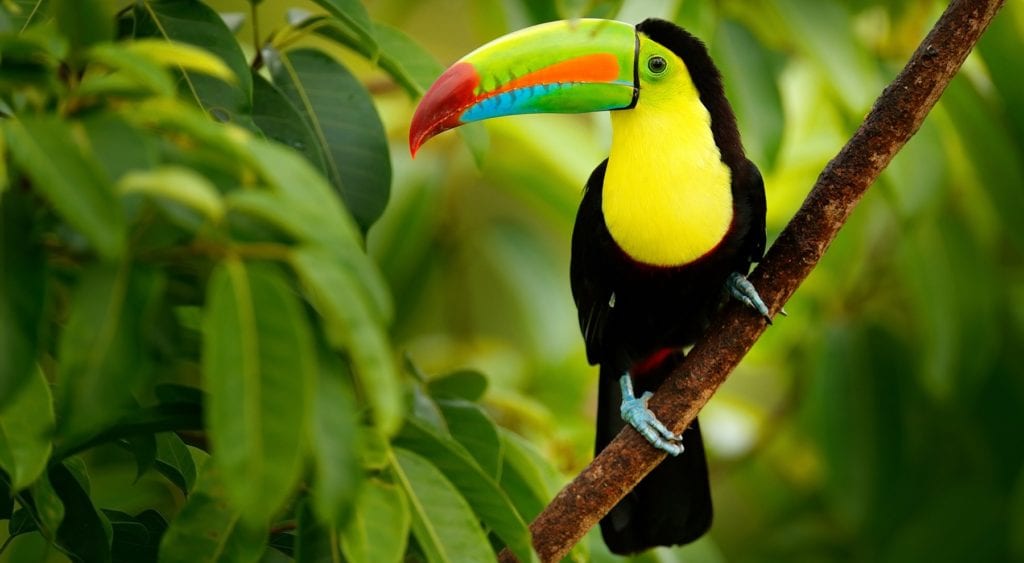
The park is home to over 350 recorded species of bird, including toucans, parrots, three-wattled bellbirds and great curassows, along with howler monkeys, armadillos and coatis, ticks and other biting insects. It also has the largest density of Costa Rica’s national flower the guaria morada or purple orchid.
Horses can be rented in the park from some of the lodges. If you want to climb the volcano you will need to camp near the top, or at the warden’s station, in order to ascend early in the morning before the clouds come in. Trails through the park lead to most sights of interest, including beautiful waterfalls and swimming holes.
Best time to visit: December to February (dry season)
Monteverde Cloud Forest Reserve
Whether you’re with a guide, or exploring alone, Monteverde Cloud Forest Reserve, offers the chance to discover a great wilderness. Wander the quieter trails passing trees cloaked in moss and epiphytes, drenched by passing clouds. Catch a glimpse of an exotic bird, spider or brightly coloured frog. Take a nocturnal tour to see tarantulas and other creatures of the night.
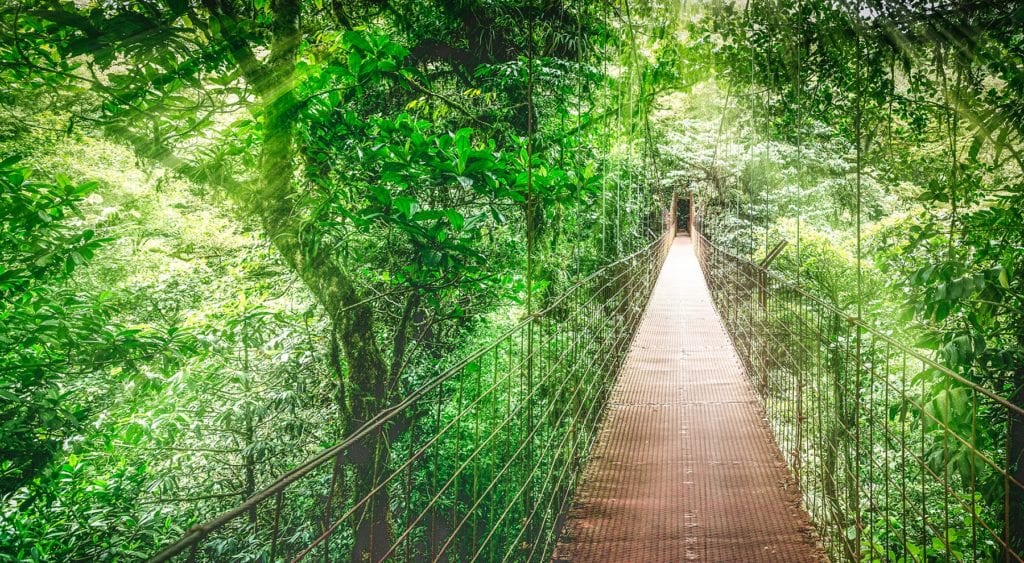
Then get up early to experience the rainforest as dawn breaks. You can happily spend a day enthralled by the jungle, but for real adventure, head deep into the reserve and spend a few days at one of the field stations.
Volcán Arenal National Park
Established in 1991, this national park encompasses 12,124 ha of forested terrain, including the volcanic peaks of Arenal and Cerro Chato. Home to more than 450 avian species, it is one of Costa Rica’s 21 Important Bird Areas – the three-wattled bell bird, the great curassow, the bare-necked umbrella bird, the keel-billed mot mot and the resplendent quetzal are all resident.
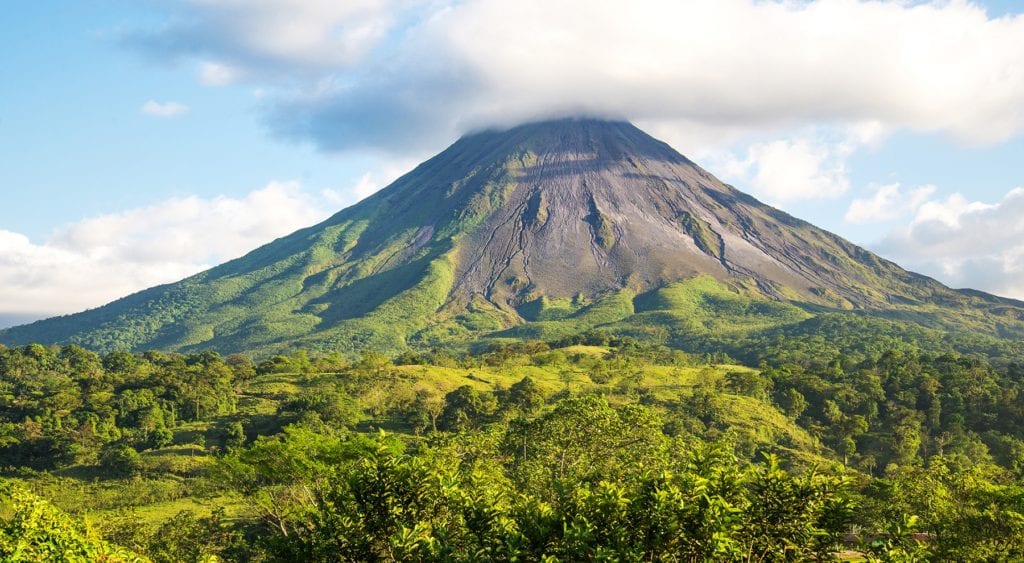
From the reception area, hikers have a few options, all of them undemanding. The Sendero Heliconias is a flat, linear jaunt through early secondary forest, 1km long. More interesting is the Sendero Las Coladas, flat for 1.5km until it enters lava fields forged by Arenal’s eruptions, whereupon it becomes steep and irregular for 500 m. The Sendero El Ceibo, 1.8 km, loops off Las Coladas throughout mature secondary forest and is 95% flat.
A trail with vehicular access leads from the reception 1.3km to a mirador with a parking area, benches and striking views. It is not permitted to climb to the summit of Arenal, but Cerro Chato, near Río Fortuna waterfall, can be scaled for expansive views of the surrounding area.
Best time to visit: December to May
More information
Discover more about Costa Rica in our guide: